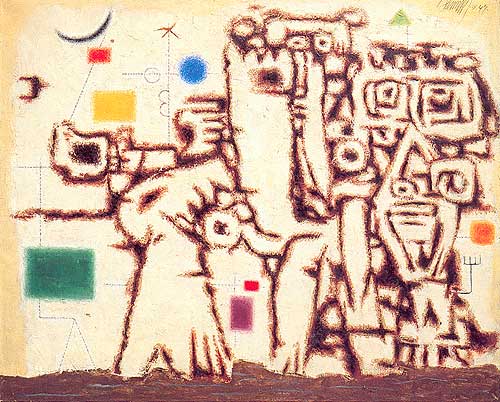A study of the purpose of art and impact on art timeline
Problem of Complexity
Evolution increases order, which may or may not increase complexity (but usually does). — The Singularity Is Near, Ray Kurzweil
I wondered what does this mean for the evolution of art. (By art here, I mean all creative endeavors including writing, films, sculptures, and such.)
We seem to be heading towards simplicity, towards accessibility, and relatability. Evident by most of our best-sellers. And most avant-garde and complex works remain unpopular.
Does this mean we are far away from a paradigm shift in the evolution of art? Far away from the next big art movement? Since we haven’t reached the level of complexity that leads to a shift?
Or have we started a new cycle with the big shift that just passed us by?
Having entangled myself with complexity’s relation to the evolution, trends, and future of art, I revisited the problem from another angle.
Angle Of Order
This time I started with Order.
Order is information that fits a purpose. — The Singularity Is Near, Ray Kurzweil
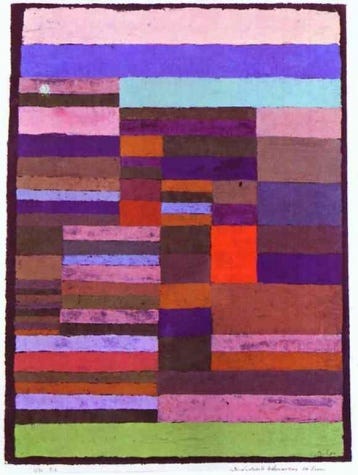
I started the problem solving by brainstorming what purpose art has.
The following purposes made it to my list:
1.Biological: Evolutionary need. Creating art helped attract mates, increase reproductive processes…In other words, someone who created art had better chances to survive.
2.Utilitarian: In the early days, art served as a purpose to explain with drawings on caves, hunting, etc mechanisms when language was not yet born
3. Absurdism: In an effort to connect the eternal human nostalgia and longing with a senseless world, human creates art.
4. Denial of death: In an effort to deny his mortal insignificance, a human creates art to add value to his existence, make himself eternal.
5.Religious: Should probably be a sub-category of 4. Human creates art to establish and reinforce self significance by inventing invisible higher powers and serving as a connection to this supernatural power through the process of art.
6. Ritualistic: On the altar of the display, human creates art to create a system that provides mutual importance and significance. Should probably be a sub-category of 4.
7.Mysticism/Dream: The purpose unexplained. The human spark unresolved. This symbolic purpose remains intangible for my analysis.
8.Personal expression/Individualism: Human creates art to make her unique stamp devoid of cultural and societal influence, devoid of dependence on time and space. Bleeding and tearing through, she craves for individualism and personal expression in a world that remains ever distant. It is a personal revolution that potentially includes 1–7 but without biological, emotional, or psychological constraints. Interestingly when complexity has reached in this aspect, it could also cause a paradigm shift in art.
Purpose of Personal Imprint
I laid the purpose of Personal Expression/Individualism on the timeline of art and it somewhat made sense to me as a possible driver of the evolution timeline.
“Evolution increases order. Order is information that fits a purpose.” — R Kurzweil
With the purpose of personal revolutions, human creates art leading to more and more order (personal and external) and better answers. Most of the times with increased complexity (Dadaism) but sometimes with simpler solutions (Pop Art). But the driving purpose behind evolution of art remains the craving for unreplaceable, irreplicable, unique individual imprint and impact.
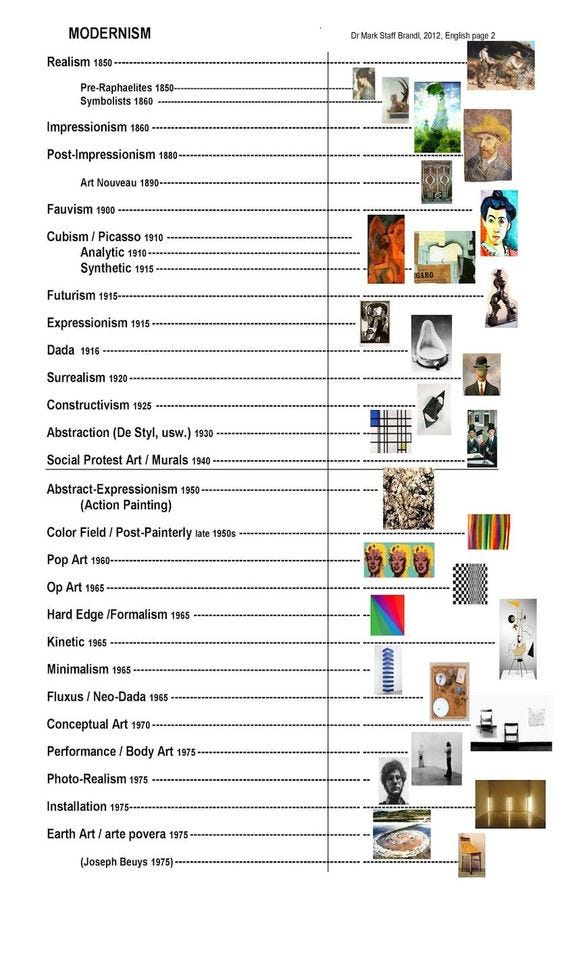
I then went ahead and laid the evolution of art on the The Six Epochs of Evolution/ also the timeline to achieve Singularity as outlined by Ray Kurzweil. While I haven’t been able to solve the problem to any satisfaction yet, I think 1 and 6 seem to be pretty clear.
Epoch 1: Physics and Chemistry= Source idea of the art
Epoch 2: Biology = Body of art
Epoch 3: Brains = Drive for the purpose
Epoch 4: Technology= Personal art evolves
Epoch 5: Merger of Technology= Art and human merge
Epoch 6: The Universe Wakes up
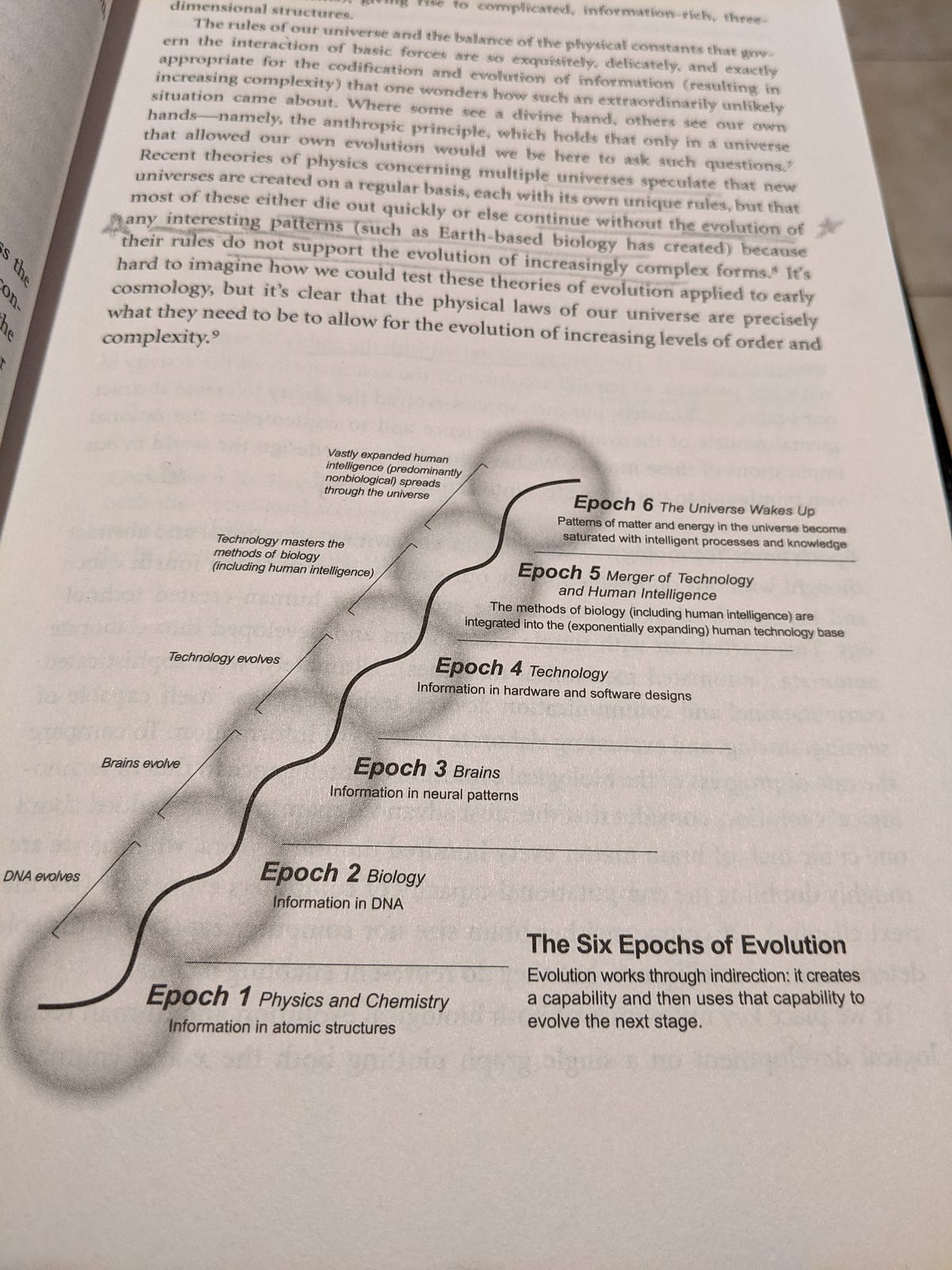
The Singularity Is Near, Ray Kurzweil
The Next Grand Shift
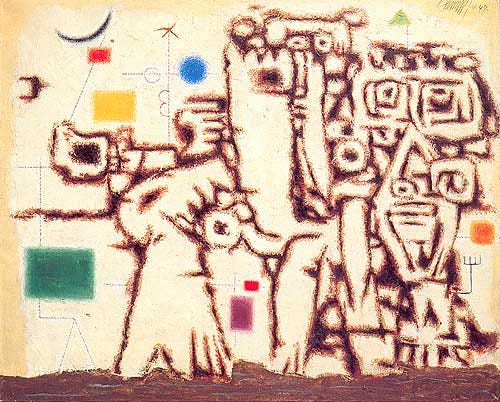
There could be infinite art paradigm shifts within each epoch cycle. But each one starts with one complex (embedded in minimal size with complexities of the previous cycle )idea and ends with the consumption of matter and energy of this universe for it to be ready for a new one.
The next grand shift in the art will come when we have consumed our creative energy with the production of individual and unique imprints.
This is when a David Lynch will be born starting with a new source idea, most likely more complex than before (not always), that drives towards personal artistic revolution and strives for better answers (personal and external).
And the evolution of art continues.
This is also when a group of creatives come together to revolt against existing tyranny and solve cruelty by creating art unique to their movement. But I might be getting too utopian with my predictions here so I shall stop.
Vaishali Paliwal
First published in The Collector

